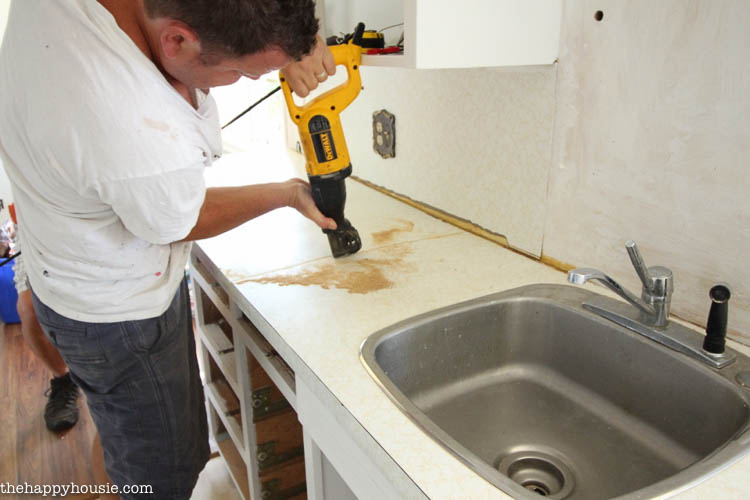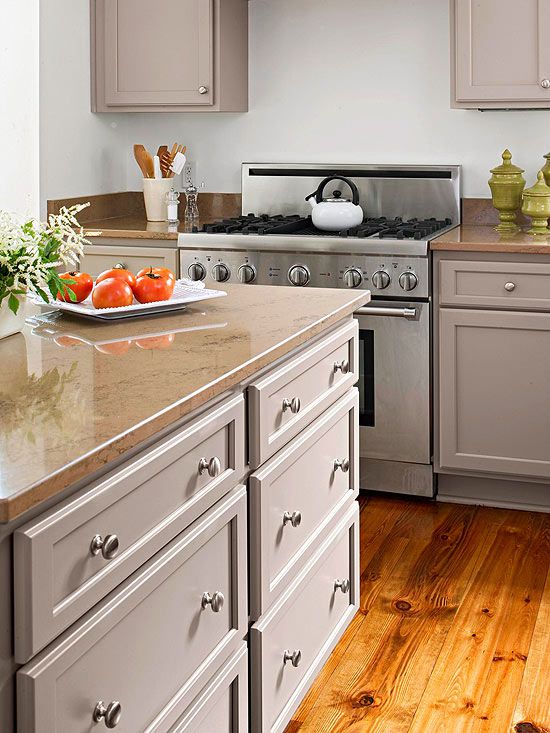Installing new kitchen countertops is a transformative and exciting project that can elevate the aesthetics and functionality of your kitchen. Whether you’re upgrading for a modern look, enhanced durability, or improved resale value, the process requires careful planning and attention to detail.
The first step in installing new kitchen countertops is choosing the right material. Options vary widely, including granite, quartz, marble, laminate, and more. Each material has its own set of characteristics, such as durability, maintenance requirements, and aesthetic appeal. Consider your lifestyle, budget, and design preferences to make an informed decision.
Once you’ve selected the material, accurate measurements of your existing countertops are crucial. Precision is key to ensuring a seamless fit during installation. Professionals often use templates or advanced measuring tools to capture the exact dimensions of your kitchen surfaces.
Before the installation day, it’s essential to prepare the kitchen by removing any items from the existing countertops and clearing the workspace. Disconnecting plumbing fixtures and appliances, such as the sink and cooktop, is often necessary to facilitate the removal of old countertops and the installation of new ones.
The removal of old countertops involves careful dismantling to avoid damage to the underlying cabinets. Depending on the material, this process may vary. For instance, laminate countertops are usually easier to remove than heavier materials like granite or quartz.

Once the old countertops are removed, the next step is to inspect the underlying cabinets for any issues or necessary repairs. It’s an opportune time to address any structural concerns, fix loose cabinet components, or make adjustments to ensure a stable foundation for the new countertops.
Installing the new countertops requires precision and skill. The professionals will carefully place the countertops, ensuring they align perfectly with the existing layout. In some cases, adjustments may be needed to accommodate specific features, such as sink and cooktop cutouts.
Seams are a crucial consideration in countertop installation, especially for materials like granite or quartz. Skilled installers will join sections seamlessly to create a cohesive look. The goal is to make seams inconspicuous, ensuring a polished and high-quality finish.

Attaching the countertops securely to the cabinets is the next step in the installation process. This is typically done using screws or adhesive, depending on the material and design. Proper anchoring ensures stability and longevity.
Installing the sink is a critical aspect of the process. Professionals will cut precise openings for the sink and, if applicable, the cooktop. Ensuring a snug fit for these fixtures is crucial for both aesthetics and functionality.
Sealing the seams and edges is an essential part of the installation, particularly for porous materials like granite or marble. This step prevents moisture penetration and enhances the countertop’s longevity. The type of sealant used depends on the material, and professionals will choose the appropriate product for a durable finish.
Reconnecting plumbing fixtures and appliances follows the installation of the countertops. This involves attaching the sink, faucet, and any other disconnected components. It’s crucial to ensure that all connections are secure to prevent leaks.
Cleaning and inspecting the newly installed countertops is the final step. Professionals will carefully clean the surfaces, removing any dust, debris, or adhesive residues. A thorough inspection ensures that the installation meets quality standards and that there are no visible issues.
After the installation is complete, it’s advisable to follow any care and maintenance guidelines provided by the countertop manufacturer. Proper care will help preserve the appearance and functionality of the countertops over time.
Installing new kitchen countertops involves a series of meticulous steps, from material selection to final inspection. Professional installation ensures precision, durability, and a beautiful finish that can significantly enhance the overall look and feel of your kitchen.
Replace Kitchen Countertops Better Homes & Gardens

How to Install a Granite Kitchen Countertop

How to Remove Laminate Kitchen Countertops

Step-By-Step Instructions to Install a Kitchen Countertop

Tips On How to Replace Countertops In Your Kitchen {Iced White

How to Install a Granite Kitchen Countertop

When to Replace Your Kitchen Countertops u2013 Top Tips

Related articles: